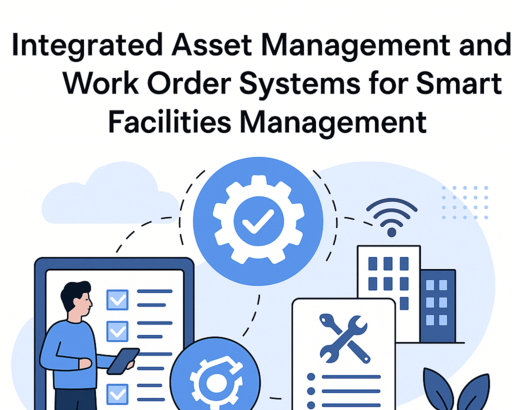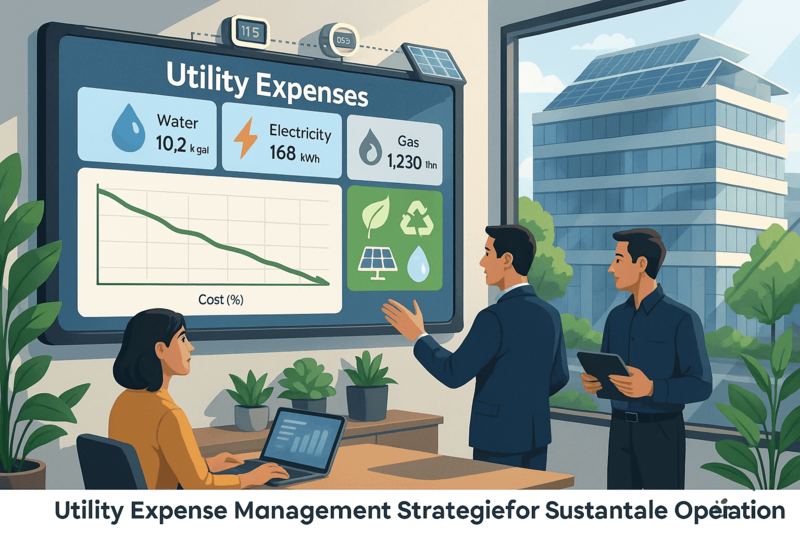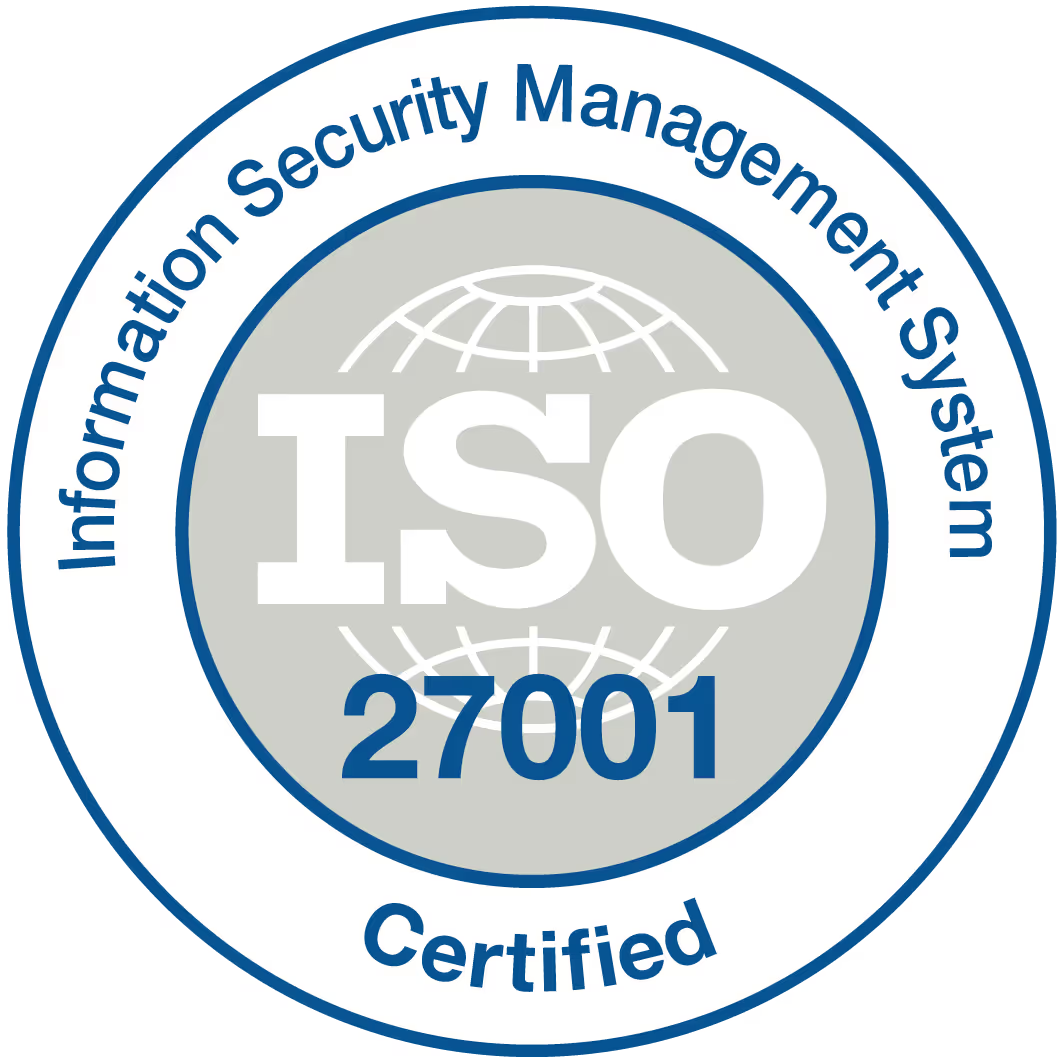Overcoming the Obstacles of Smart Facilities Management Implementation
Implementing Smart FM is certainly not without its challenges, but these obstacles are not insurmountable.

Firstly, the initial investment required can be substantial. To mitigate this, organisations can opt for scalable solutions that allow for gradual implementation. This approach spreads out the cost over time, making it more manageable.
Data security and privacy are primary concerns. These can be addressed by implementing robust cybersecurity measures, ensuring compliance with data protection regulations, and partnering with trusted providers like Infodeck.io, who are ISO 27001 and SOC 2 Type II certified, as well as GDPR compliant.
Integration with existing FM systems and processes can be complex, but a meticulous planning and execution strategy can streamline this. Hiring experts in the field or collaborating with a technical partner can be beneficial in this regard.
If your organization has never implemented a facility management (FM) solution, now is the perfect time to do so. By incorporating the Internet of Things (IoT) alongside it, you can unlock even more benefits. Don't miss out on this opportunity to enhance your operations and streamline your processes.
The final hurdle is training and developing skills among FM professionals to operate and manage smart FM systems effectively. This can be achieved through comprehensive training programs and continuous learning opportunities. Embracing digital transformation in facilities management is a journey, but with the right strategies, it can lead to substantial benefits in terms of efficiency and cost savings.
Initial Investment and Cost Considerations
When considering the implementation of Smart FM, it's crucial to factor in the initial investment and ongoing costs. Smart FM systems often entail substantial upfront expenses, including not only the cost of the technology itself but also the costs associated with system configuration, integration, and staff training. Additionally, organisations must consider the ongoing costs like software upgrades, system maintenance, and potential replacement costs.
When considering a Smart FM solution, SaaS can be an ideal choice for operating expenses (OPEX). It offers a perfect blend of affordability and functionality.
Data Security and Privacy Concerns
Implementing Smart FM also brings about a heightened focus on data security and privacy. Given that these systems frequently handle sensitive corporate data, it's crucial to ensure robust security measures are in place. Businesses must also comply with data privacy regulations, which can vary significantly from one region to another. It's essential to remember that any breach of data security or privacy could lead to legal repercussions and damage to the company's reputation.
Integration with Existing FM Systems and Processes
The integration of Smart FM with existing FM systems and processes can also pose a challenge. It's essential to find a solution that not only fulfils your current needs but can also seamlessly integrate with your existing FM infrastructure. This often requires careful planning, strategising, and potentially, system customisations.
Training and Skill Development for FM Professionals
Lastly, the transition to Smart FM systems necessitates training and skill development for FM professionals, which can be a time-consuming and costly process. FM teams need to understand not only how to use the new systems, but also how to leverage them to their full potential for maximum efficiency and value. Therefore, a comprehensive training program is an integral part of the transition to Smart FM.
The Benefits of Smart Facility Management are Endless
Smart Facility Management offers organisations a range of both short-term and long-term benefits, from increased operational efficiency to improved cost savings. By taking advantage of the technology's real-time monitoring capabilities, predictive maintenance features and data-driven insights, organisations can ensure their facilities are always running at peak performance. Additionally, the implementation of Smart FM encourages organisations to take a proactive approach to facility management, allowing them to address potential issues before they arise and thus preventing costly repair bills down the line.
Improved energy efficiency and sustainability
One of the significant benefits of implementing Smart FM is the potential for improved energy efficiency and sustainability. These systems can monitor and manage the energy usage of a building, identifying inefficiencies and adjusting the consumption of resources like electricity, gas, and water automatically. Furthermore, they provide valuable insights into energy usage patterns, enabling organisations to make informed decisions about their energy management strategies. This not only reduces operational costs but also contributes to a company's sustainability initiatives, making Smart FM an environmentally friendly choice.
Enhanced operational efficiency and cost savings
Smart FM systems contribute significantly to enhanced operational efficiency and cost savings. They enable real-time tracking and management of all facilities-related tasks, thus eliminating the need for manual monitoring and resulting in increased productivity. Moreover, predictive maintenance capabilities can alert facility managers to potential issues before they become significant problems, thereby reducing downtime and associated costs. By automating routine tasks, these systems can also free up staff time, allowing employees to focus on more complex, value-adding activities. Over time, these efficiency gains can lead to substantial cost savings for the organisation.
Improved safety and compliance
Smart FM can also play a pivotal role in improving safety within the organisation. By monitoring the environment in real-time, these systems can detect and alert facility managers to unsafe conditions, such as equipment malfunctions or excessive heat, thereby preventing accidents. Additionally, they can help organisations maintain compliance with safety regulations by automating the tracking and reporting of safety-related data. This not only protects employees but also helps organisations avoid potential fines and legal issues related to safety non-compliance.
Enhanced decision making
With the wealth of data generated by Smart FM systems, facility managers are equipped with detailed insights that can inform strategic decision-making. These systems provide granular visibility into facility operations, enabling managers to identify trends, spot inefficiencies, and make data-driven decisions. Whether it's deciding when to replace equipment, where to allocate resources, or how to improve operational efficiency, Smart FM data can provide the valuable insights necessary for effective decision-making.
Increased asset longevity
Through real-time monitoring and predictive maintenance, Smart FM can significantly extend the lifespan of facility assets. By identifying potential issues early on, these systems allow for timely repairs and maintenance, preventing minor issues from escalating into major, costly breakdowns. This proactive maintenance approach not only reduces repair and replacement costs but also ensures a longer, more efficient operational life for facility assets.
Connected buildings utilise IoT technology to enable communication and data exchange between different building systems. This connectivity enhances operational efficiency, facilitates proactive maintenance, and improves occupant comfort. It also provides valuable insights into energy consumption, occupancy patterns, and equipment performance, allowing for data-driven decision-making and cost reduction. Embracing connected buildings in facility management unlocks efficiency, cost savings, and sustainability.
Real-time Monitoring and Predictive Maintenance: Improving Facility Management
Real-time monitoring and predictive maintenance are two key components of smart facility management (Smart FM) that can greatly enhance operational efficiency and reduce costs. These advanced technologies utilise the Internet of Things (IoT) to collect real-time data about various aspects of facility operations, enabling facility managers to proactively address potential issues before they become significant problems.
Real-time monitoring involves the continuous collection and analysis of data from sensors and other monitoring devices installed throughout the facility. These devices can measure various parameters such as temperature, humidity, occupancy, energy consumption, and equipment performance. The data collected is then transmitted to a central system, where it can be analysed in real-time.
The benefits of real-time monitoring are numerous. By having access to up-to-date information about facility operations, facility managers can quickly identify any anomalies or deviations from normal operating conditions. For example, if a temperature sensor detects a sudden increase in temperature in a server room, the system can immediately alert the facility manager, who can then take appropriate action to prevent equipment damage or downtime.
Real-time monitoring also enables facility managers to optimise resource allocation. By analysing data on occupancy patterns, energy consumption, and equipment usage, managers can identify areas where resources are being under-utilised or where there is excessive demand. This allows them to make informed decisions about resource allocation, leading to improved operational efficiency and cost savings.
Predictive maintenance, on the other hand, takes real-time monitoring a step further by using advanced analytics and machine learning algorithms to predict when equipment is likely to fail or require maintenance. By analysing historical data and identifying patterns and trends, predictive maintenance models can estimate the remaining useful life of equipment and provide early warnings of potential failures.
The main advantage of predictive maintenance is that it allows facility managers to take a proactive approach to maintenance. Instead of waiting for equipment to fail or scheduling maintenance based on a fixed time interval, predictive maintenance models can recommend maintenance actions based on the actual condition of the equipment. This not only reduces downtime and associated costs but also extends the lifespan of the equipment, leading to increased asset longevity.

Compared to traditional maintenance models, which rely on reactive and scheduled maintenance, real-time monitoring and predictive maintenance offer several benefits.
1. Proactive Approach: Real-time monitoring and predictive maintenance enable facility managers to identify potential issues before they become significant problems. This allows for timely intervention and prevents costly breakdowns or repairs.
2. Cost Savings: By addressing maintenance issues proactively, facility managers can avoid costly emergency repairs and reduce downtime. Additionally, preventive maintenance reduces the cost of parts, labor, and other associated costs.
3. Enhanced Safety: By monitoring assets in real-time, facility managers can identify any potential safety risks before they become a major issue. In addition, predictive maintenance helps to reduce the risk of catastrophic equipment failure that could lead to serious injury or worse.
4. Increased Productivity: By proactively addressing maintenance issues, facility managers can ensure that production is running smoothly and efficiently. This leads to a more productive workplace and better customer service.
5. Improved Operational Reliability: Predictive maintenance helps to identify potential problems before they become an operational issue. This allows for quick resolution of any issues, thus reducing downtime and increasing the reliability of operations.
6. Cost Savings: Predictive maintenance can provide considerable cost savings over traditional reactive maintenance approaches. By identifying and addressing problems before they become an issue, facility managers are able to reduce the need for costly emergency repairs and replacements. In addition, predictive maintenance can help to extend the life of equipment and machinery, saving money in the long run.
7. Improved Safety: By addressing potential problems before they become an issue, predictive maintenance helps to ensure the safety of staff and customers alike. Taking proactive steps to identify and address potential operational risks helps to keep everyone safe. 8. Enhanced Efficiency: Predictive maintenance can also help to improve the overall efficiency of operations by reducing downtime and increasing reliability. This means that businesses are able to produce more with the same amount of resources, allowing them to maximise their profits.
9. Better Visibility: Predictive maintenance also helps facility managers gain better visibility into their operations. By keeping track of equipment and other assets, managers can monitor performance and make informed decisions about how to best use their resources. This improved visibility leads to increased productivity as well as cost savings.
10. Improved Customer Service: Predictive maintenance also has the potential to improve customer service. By being able to identify and fix problems before they arise, businesses can reduce the number of issues that their customers experience, resulting in happier customers and improved customer loyalty. This means more repeat business for the company and higher profits in the long run.
11. Increased Efficiency: Predictive maintenance can also help businesses increase their efficiency by eliminating unnecessary downtime and preventing overuse of resources. By closely monitoring the performance of their equipment, businesses can create maintenance schedules that maximise efficiency and minimise disruption to production.
12. Reduced Environmental Impact: Predictive maintenance helps businesses reduce their environmental impact by reducing energy use and improving air quality. For example, by detecting potential issues early on, predictive maintenance can help companies identify problems and fix them before they become serious. This helps minimise the release of dangerous pollutants into the environment and improve air quality.
Enhanced occupant experience and satisfaction
The successful implementation of Smart FM offers numerous benefits for organisations, including improved energy efficiency and sustainability, enhanced operational efficiency and cost savings, real-time monitoring and predictive maintenance capabilities, and the ability to enhance occupant experience and satisfaction.
Smart HVAC systems also play a crucial role in smart facility management. These systems leverage IoT and advanced analytics to optimise heating, ventilation, and air conditioning operations in buildings. By collecting real-time data on temperature, humidity, occupancy, and energy usage, smart HVAC systems can adjust settings automatically to ensure optimal comfort for occupants while minimising energy consumption. This not only improves energy efficiency and reduces utility costs but also contributes to the overall sustainability of the facility. Additionally, smart HVAC systems can integrate with other smart building systems, such as lighting and occupancy sensors, to further enhance operational efficiency and occupant comfort.
Smart FM also helps organisations gain a deeper understanding of their building assets by providing detailed data about their operations. This can be used to improve decision-making and optimise operations.
The implementation of Smart FM also offers a range of long-term financial benefits, including lower energy costs, reduced maintenance expenses, improved asset management capabilities, and increased revenue potential. Additionally, the system's ability to detect potential problems before they arise helps prevent costly repair bills down the line.
Overall, the advantages of Smart FM are many, from enhanced operational efficiency to improved cost savings. When implemented correctly, the system can significantly enhance an organisation's bottom line.
Future of Smart Facility Management
As we venture further into the digital era, the future of facility management is seemingly boundless. Smart FM technology will continue to evolve, becoming increasingly sophisticated and powerful. We can expect future systems to be more intuitive and autonomous, with the capacity to self-learn, self-adjust, and even self-repair.
Artificial Intelligence (AI) and Machine Learning (ML) will further revolutionise the field, enabling predictive analytics that can forecast potential issues before they occur. This will not only enhance operational efficiency but also enable proactive, rather than reactive, facility management.
The integration of the Internet of Things (IoT) will also become more prevalent, connecting a multitude of devices and systems in real-time. This convergence of technology will provide comprehensive, holistic management of facilities, encompassing everything from energy usage and asset maintenance to security and space utilisation.
Augmented Reality (AR) and Virtual Reality (VR) could also play a role in future smart FM, offering immersive, interactive training programs for facility management professionals. This will not only improve skills and knowledge but also enhance the overall effectiveness of the FM team.
Digital Twin technology will also become more commonplace, allowing facility managers to accurately simulate and test any changes they want to make in the built environment before implementing them.
While there may be challenges to overcome in the journey towards a fully automated, smart Facility Management, the potential benefits and opportunities far outweigh the hurdles. It's an exciting future for Facility Management, one that holds tremendous promise and potential for those willing to embrace the change.
Conclusion
- Smart Facility Management is necessary for organisations to remain competitive in the digital landscape
- Smart FM provides capabilities like real-time monitoring, predictive maintenance, and data-driven decision-making
- Implementation of Smart FM requires careful planning and investment
- The long-term benefits of Smart FM are substantial, both operationally and financially
- Embracing Smart FM leads to improved efficiency, cost savings, and overall success for organisations
The successful implementation of Smart FM requires careful planning and consideration of both upfront and ongoing costs. Additionally, organisations must ensure they meet data security and privacy regulations while fully integrating the system into their existing workflow. However, the potential benefits that come with Smart Facility Management are immense and far-reaching: improved efficiency, cost savings, safety, decision-making, asset longevity and enhanced occupant experience. As the technology continues to evolve, its value to organisations is only expected to increase. For those willing to move forward into a digitalised future of FM, the rewards of implementing Smart FM will make it a worthwhile investment.
By taking advantage of the power of Smart Facility Management, organisations can stay ahead of the curve and remain competitive in today's rapidly evolving world. With its combination of real-time monitoring capabilities, predictive maintenance technology and data-driven insights, Smart FM provides an invaluable tool for future success. So take the plunge and experience the power of Smart FM today.

.png)









.png)




.png)















.jpeg)





























